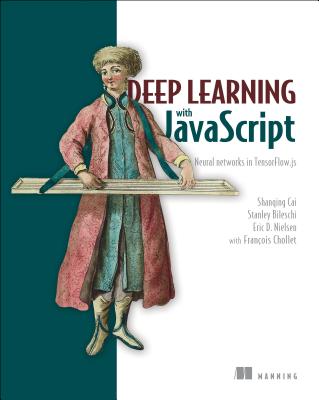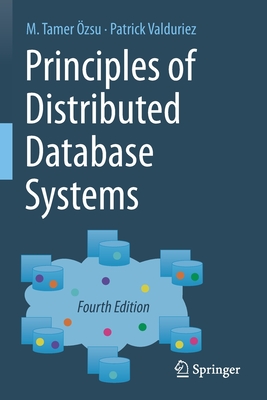Software Design X-Rays: Fix Technical Debt with Behavioral Code Analysis
暫譯: 軟體設計X光:透過行為程式碼分析修復技術負債
Adam Tornhill
- 出版商: Pragmatic Bookshelf
- 出版日期: 2018-04-17
- 售價: $1,600
- 貴賓價: 9.5 折 $1,520
- 語言: 英文
- 頁數: 276
- 裝訂: Paperback
- ISBN: 1680502727
- ISBN-13: 9781680502725
-
相關分類:
UI/UX、Refactoring、Version Control
立即出貨 (庫存 < 4)
買這商品的人也買了...
-
 Arduino 官方正版 Genuino 101
Arduino 官方正版 Genuino 101$1,700$1,700 -
 $400tmux 2: Productive Mouse-Free Development
$400tmux 2: Productive Mouse-Free Development -
 Raspberry Pi 3 Model B+ (UK製)
Raspberry Pi 3 Model B+ (UK製)$4,620$4,389 -
 JVM Performance Engineering: Inside OpenJDK and the HotSpot Java Virtual Machine (Paperback)
JVM Performance Engineering: Inside OpenJDK and the HotSpot Java Virtual Machine (Paperback)$1,980$1,881 -
 晉昇軟體最高殿堂:Jenkins2 持續整合大師之路
晉昇軟體最高殿堂:Jenkins2 持續整合大師之路$600$474 -
 $1,320Deep Learning with JavaScript: Neural Networks in Tensorflow.Js
$1,320Deep Learning with JavaScript: Neural Networks in Tensorflow.Js -
 JavaScript 技術手冊
JavaScript 技術手冊$560$420 -
 Building a Future-Proof Cloud Infrastructure: A Unified Architecture for Network, Security and Storage Services (Paperback)
Building a Future-Proof Cloud Infrastructure: A Unified Architecture for Network, Security and Storage Services (Paperback)$1,998$1,898 -
 $1,584Microservices Security in Action
$1,584Microservices Security in Action -
 Principles of Distributed Database Systems, 4/e (Paperback)
Principles of Distributed Database Systems, 4/e (Paperback)$2,800$2,660 -
 $2,280Parallel and High Performance Computing (Paperback)
$2,280Parallel and High Performance Computing (Paperback) -
 $2,070Multithreaded JavaScript: Concurrency Beyond the Event Loop
$2,070Multithreaded JavaScript: Concurrency Beyond the Event Loop -
 Structure and Interpretation of Computer Programs: JavaScript Edition (Paperback)
Structure and Interpretation of Computer Programs: JavaScript Edition (Paperback)$2,680$2,546 -
 Understanding Distributed Systems : What every developer should know about large distributed applications, 2/e (Paperback)
Understanding Distributed Systems : What every developer should know about large distributed applications, 2/e (Paperback)$1,650$1,568 -
 建構機器學習管道|運用 TensorFlow 實現模型生命週期自動化 (Building Machine Learning Pipelines: Automating Model Life Cycles with Tensorflow)
建構機器學習管道|運用 TensorFlow 實現模型生命週期自動化 (Building Machine Learning Pipelines: Automating Model Life Cycles with Tensorflow)$580$458 -
 $2,166Mastering API Architecture: Design, Operate, and Evolve Api-Based Systems (Paperback)
$2,166Mastering API Architecture: Design, Operate, and Evolve Api-Based Systems (Paperback) -
 $1,767Functional Design: Principles, Patterns, and Practices (Paperback)
$1,767Functional Design: Principles, Patterns, and Practices (Paperback) -
 OpenTelemetry 入門指南:建立全面可觀測性架構(iThome鐵人賽系列書)【軟精裝】
OpenTelemetry 入門指南:建立全面可觀測性架構(iThome鐵人賽系列書)【軟精裝】$750$563 -
 $1,995Learning Systems Thinking: Essential Nonlinear Skills and Practices for Software Professionals (Paperback)
$1,995Learning Systems Thinking: Essential Nonlinear Skills and Practices for Software Professionals (Paperback) -
 Collaborative Software Design: How to Facilitate Domain Modeling Decisions
Collaborative Software Design: How to Facilitate Domain Modeling Decisions$1,750$1,663 -
 內行人才知道的機器學習系統設計面試指南 (Machine Learning System Design Interview)
內行人才知道的機器學習系統設計面試指南 (Machine Learning System Design Interview)$680$537 -
 Mastering Opentelemetry and Observability: Enhancing Application and Infrastructure Performance and Avoiding Outages
Mastering Opentelemetry and Observability: Enhancing Application and Infrastructure Performance and Avoiding Outages$2,100$1,995 -
 $2,062Full Stack JavaScript Strategies: The Hidden Parts Every Mid-Level Developer Needs to Know (Paperback)
$2,062Full Stack JavaScript Strategies: The Hidden Parts Every Mid-Level Developer Needs to Know (Paperback) -
 $2,280Beyond Vibe Coding: From Coder to Ai-Era Developer (Paperback)
$2,280Beyond Vibe Coding: From Coder to Ai-Era Developer (Paperback) -
 $2,328Building Event-Driven Microservices: Leveraging Organizational Data at Scale
$2,328Building Event-Driven Microservices: Leveraging Organizational Data at Scale
相關主題
商品描述
Are you working on a codebase where cost overruns, death marches, and heroic fights with legacy code monsters are the norm? Battle these adversaries with novel ways to identify and prioritize technical debt, based on behavioral data from how developers work with code. And that's just for starters. Because good code involves social design, as well as technical design, you can find surprising dependencies between people and code to resolve coordination bottlenecks among teams. Best of all, the techniques build on behavioral data that you already have: your version-control system. Join the fight for better code!
Use statistics and data science to uncover both problematic code and the behavioral patterns of the developers who build your software. This combination gives you insights you can't get from the code alone. Use these insights to prioritize refactoring needs, measure their effect, find implicit dependencies between different modules, and automatically create knowledge maps of your system based on actual code contributions.
In a radical, much-needed change from common practice, guide organizational decisions with objective data by measuring how well your development teams align with the software architecture. Discover a comprehensive set of practical analysis techniques based on version-control data, where each point is illustrated with a case study from a real-world codebase. Because the techniques are language neutral, you can apply them to your own code no matter what programming language you use. Guide organizational decisions with objective data by measuring how well your development teams align with the software architecture. Apply research findings from social psychology to software development, ensuring you get the tools you need to coach your organization towards better code.
If you're an experienced programmer, software architect, or technical manager, you'll get a new perspective that will change how you work with code.
What You Need:
You don't have to install anything to follow along in the book. TThe case studies in the book use well-known open source projects hosted on GitHub. You'll use CodeScene, a free software analysis tool for open source projects, for the case studies. We also discuss alternative tooling options where they exist.
商品描述(中文翻譯)
您是否正在處理一個代碼庫,在這裡成本超支、死亡行軍和與遺留代碼怪物的英勇鬥爭是常態?利用基於開發者如何與代碼互動的行為數據,採用新穎的方法來識別和優先處理技術負債,與這些對手作鬥爭。這僅僅是個開始。因為良好的代碼涉及社會設計以及技術設計,您可以發現人與代碼之間的驚人依賴關係,以解決團隊之間的協調瓶頸。最棒的是,這些技術建立在您已經擁有的行為數據上:您的版本控制系統。加入為更好代碼而戰的行列吧!
利用統計學和數據科學來揭示問題代碼以及構建您軟體的開發者的行為模式。這種組合為您提供了僅從代碼中無法獲得的見解。利用這些見解來優先考慮重構需求,衡量其效果,發現不同模塊之間的隱性依賴關係,並根據實際的代碼貢獻自動創建系統的知識地圖。
在一個徹底且急需的變革中,通過測量您的開發團隊與軟體架構的對齊程度,使用客觀數據來指導組織決策。發現一套基於版本控制數據的全面實用分析技術,每個要點都用真實代碼庫的案例研究進行說明。因為這些技術與語言無關,無論您使用什麼編程語言,都可以將其應用於自己的代碼。通過測量您的開發團隊與軟體架構的對齊程度,使用客觀數據來指導組織決策。將社會心理學的研究成果應用於軟體開發,確保您獲得所需的工具,以指導您的組織朝向更好的代碼。
如果您是一位經驗豐富的程序員、軟體架構師或技術經理,您將獲得一種新的視角,改變您與代碼的工作方式。
您需要的:
您不需要安裝任何東西來跟隨本書的內容。本書中的案例研究使用了在 GitHub 上託管的知名開源項目。您將使用 CodeScene,這是一個針對開源項目的免費軟體分析工具,進行案例研究。我們還會討論存在的替代工具選項。































